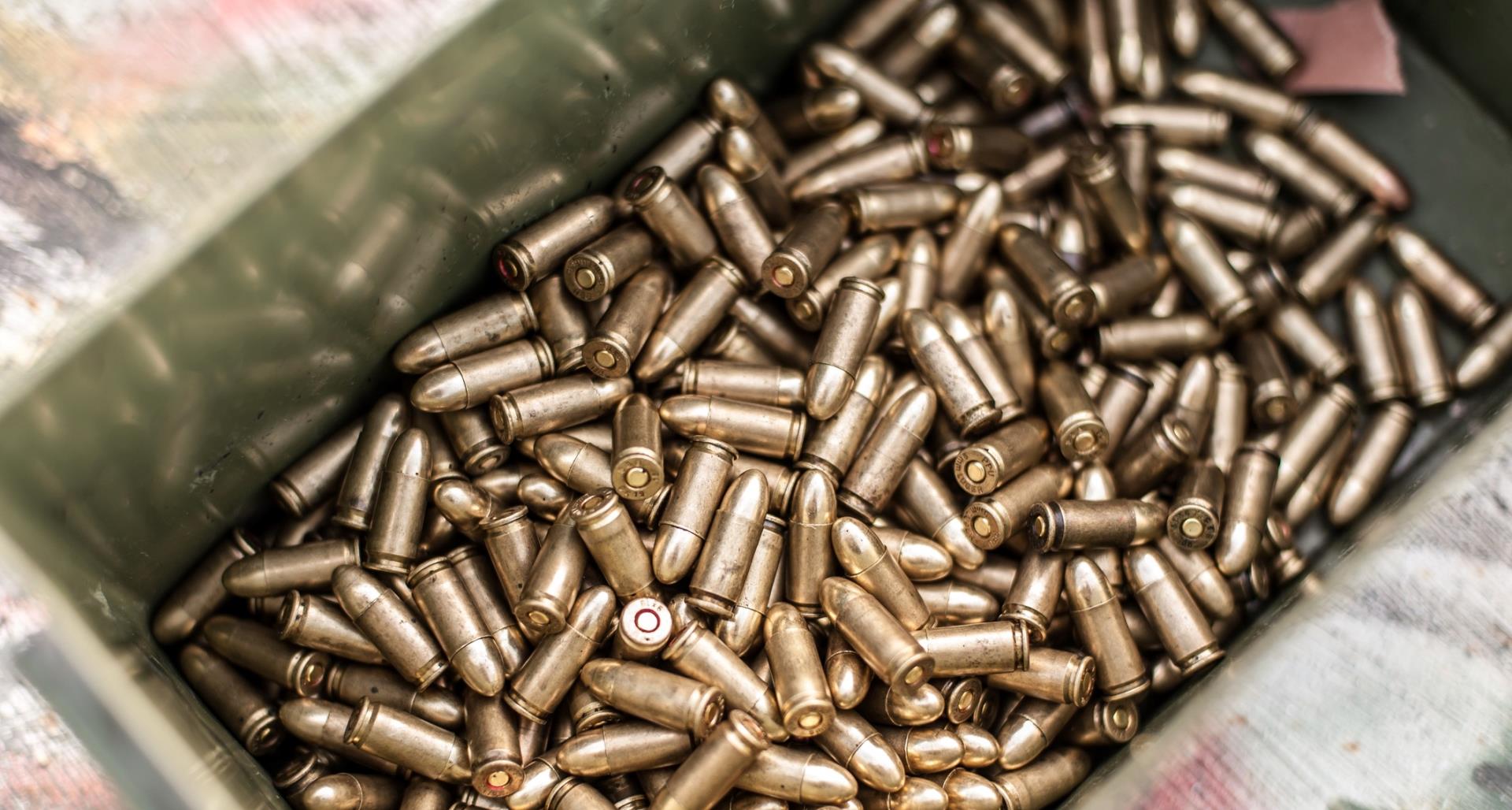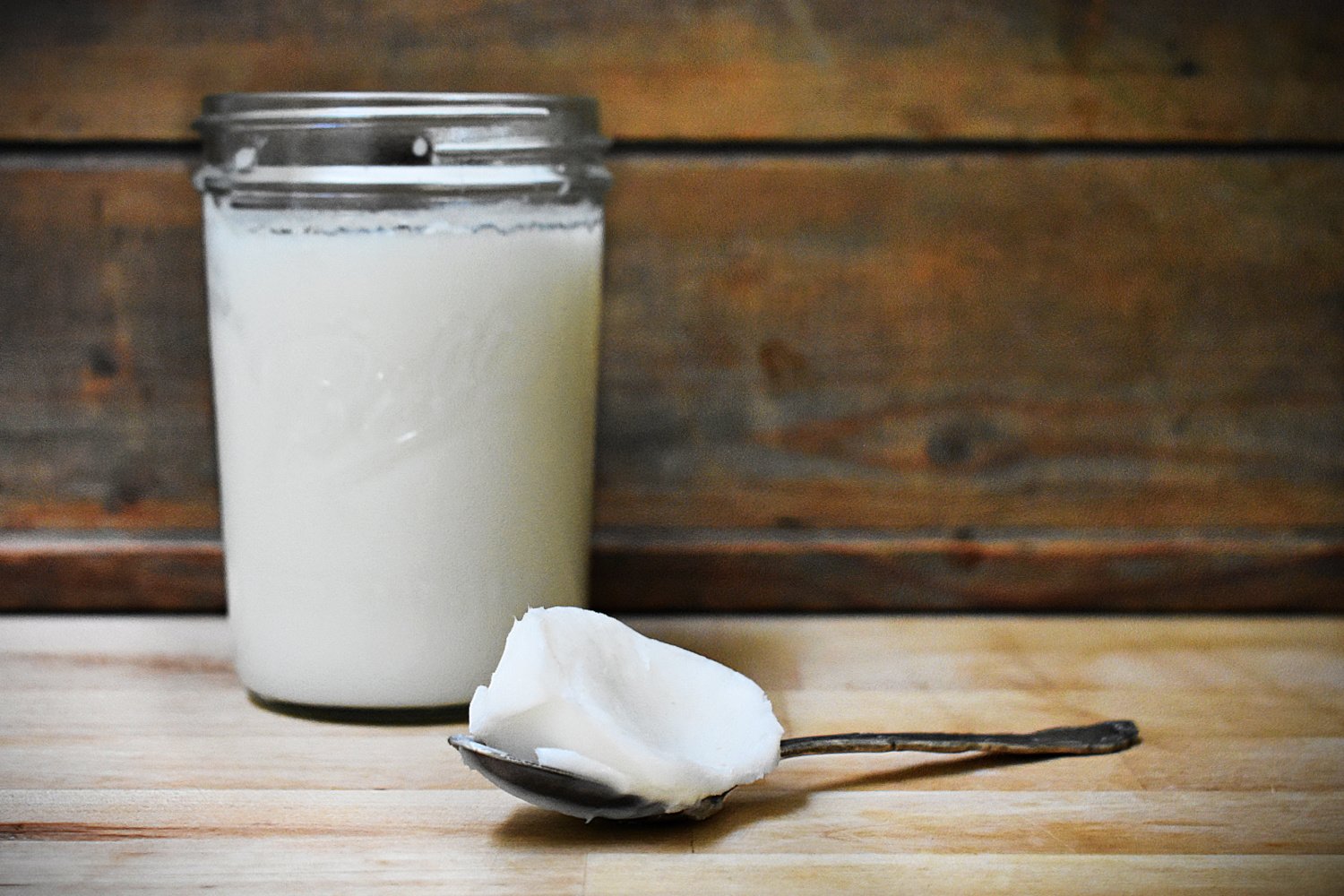

Articles
How To Store Ammo Long Term
Modified: October 28, 2024
Learn the best practices for storing ammo long term with our informative articles. Ensure your ammunition stays safe and reliable for whenever you need it.
(Many of the links in this article redirect to a specific reviewed product. Your purchase of these products through affiliate links helps to generate commission for Storables.com, at no extra cost. Learn more)
Introduction
Properly storing ammunition is essential for maintaining its quality and longevity. Whether you are a seasoned firearms enthusiast or a responsible gun owner, understanding how to store ammo long-term is crucial for safety and preserving its effectiveness.
In this article, we will explore the key factors to consider when storing ammunition for an extended period. From selecting the right containers to managing temperature and humidity, we will cover all the essential aspects to ensure your ammo remains in optimal condition.
By following these tips and best practices, you can ensure that your ammunition stays reliable and ready whenever you need it, whether for target shooting, self-defense, or other purposes.
Key Takeaways:
- Properly storing ammunition involves selecting airtight, waterproof containers, choosing a cool, dry storage location, and utilizing desiccants to control moisture levels. Regularly inspect and rotate your ammo to maintain reliability.
- Ensure compliance with local laws, store ammunition securely, and dispose of old or damaged rounds correctly. Proper packaging, separation of ammo types, and labeling hazardous materials are crucial for safe and effective long-term storage.
Read more: How To Store Ammo For Long Time
Selecting the Right Containers
Choosing the right containers for storing ammunition is crucial to protect it from environmental factors and maintain its quality. Here are some important considerations when selecting containers:
- Airtight and Waterproof: Look for containers that are airtight and waterproof to prevent moisture and humidity from seeping in. This helps to prevent corrosion and damage to the ammunition.
- Durable and Impact-Resistant: Opt for containers that are durable and impact-resistant to protect the ammunition from physical damage. Hard plastic or metal containers are recommended options.
- Proper Size and Capacity: Choose containers with enough space to hold your ammunition comfortably. Consider the quantity of ammo you have and any additional storage needs, such as magazines or accessories.
- Secure Locking Mechanism: Ensure that the containers have a secure locking mechanism to prevent unauthorized access and keep the ammunition protected.
- Labeling and Organization: It is beneficial to label your containers clearly to easily identify the type of ammunition and its storage date. This helps with organization and ensures that you can track the age and condition of each batch.
Remember, storing ammunition in its original packaging is usually not enough to protect it adequately. It is best to transfer the ammo to appropriate containers that provide the necessary protection against moisture, impact, and other potential risks.
Choosing the Ideal Location
When it comes to storing ammunition, the location plays a crucial role in ensuring its long-term viability. Here are some factors to consider when selecting the ideal location:
- Cool and Dry Environment: Aim to store your ammunition in a cool and dry environment to minimize the risk of humidity and moisture. Excessive heat and humidity can cause degradation and corrosion of the ammunition.
- Avoid Extreme Temperatures: Extreme temperatures, both hot and cold, can negatively affect ammunition. Avoid storing ammo in areas prone to drastic temperature fluctuations, such as attics or basements.
- Stable Temperature: Stability in temperature is essential for maintaining the integrity of ammunition. Fluctuations in temperature can cause the propellant to deteriorate, impacting performance and reliability.
- Away from Sunlight: Exposure to direct sunlight can cause damage to ammunition due to heat and UV rays. Store your ammo away from windows or other sources of sunlight.
- Well-Ventilated Area: While it is crucial to avoid excessive moisture, it is equally important to maintain proper ventilation. This prevents the build-up of condensation and helps regulate the humidity inside the storage area.
- Away from Chemicals and Corrosive Substances: Keep your ammo away from chemicals and corrosive substances that can cause damage. This includes storing ammunition separately from cleaning solvents or other chemicals.
When considering the location for storing ammunition, it is also important to factor in accessibility and security. Ensure that the chosen location is easily accessible to you while being secure from unauthorized access by children, pets, or potential burglars.
By following these guidelines and selecting an appropriate storage location, you can help ensure that your ammunition remains safe, reliable, and ready for use.
Managing Temperature and Humidity
Properly managing temperature and humidity is crucial for preserving the quality and longevity of your stored ammunition. Here are some tips for effectively managing these factors:
- Maintain Consistent Temperature: Aim to store your ammunition in an area with a consistent temperature. Fluctuations in temperature can cause condensation, leading to moisture buildup and potential damage to the ammo.
- Keep Humidity in Check: High humidity can accelerate corrosion and degrade the performance of your ammunition. Utilize a dehumidifier or moisture-absorbing products, such as silica gel packets, to keep the humidity levels within acceptable ranges.
- Monitor Temperature and Humidity: Invest in a digital thermometer and hygrometer to monitor the temperature and humidity levels regularly. This allows you to identify any changes or inconsistencies and take necessary measures to maintain optimal conditions.
- Consider Climate-Controlled Storage: If you live in an area with extreme temperature and humidity fluctuations, you may want to consider climate-controlled storage options like a gun safe or an ammo cabinet. These units provide insulation and control over temperature and humidity levels.
- Avoid Storing in Basements or Attics: Basements and attics are more susceptible to fluctuations in temperature and humidity. Avoid storing ammunition in these areas as they may not provide the ideal environment for long-term storage.
- Regularly Inspect and Clean: Periodically inspect your stored ammunition for signs of moisture or corrosion. If you notice any issues, remove and properly dispose of affected rounds. Additionally, consider cleaning your ammo regularly to remove any dirt or residue that may affect performance.
By effectively managing temperature and humidity levels, you can ensure that your ammunition remains in optimal condition, maintaining its reliability and effectiveness when it matters most.
Proper Ammo Packaging
Properly packaging your ammunition is essential for protecting it from external elements and maintaining its quality over time. Here are some key considerations for ensuring proper ammo packaging:
- Remove Excess Moisture: Before packaging your ammo, ensure that it is moisture-free. Wipe down any moisture or oil from the casings using a clean cloth to prevent potential corrosion.
- Use Sealed Bags or Containers: Utilize sealed bags or airtight containers for storing your ammunition. This provides an additional layer of protection against moisture, dust, and other contaminants that can affect the ammo’s performance.
- Individual Packaging: Pack each round of ammunition individually to prevent contact between casings, which can lead to friction and possible damage. This is especially important for hollow-point or soft-nose ammunition.
- Consider Ammo Cans: Ammo cans are a popular choice for long-term storage due to their durability and sealability. These metal containers provide excellent protection against moisture and physical damage.
- Labeling and Organization: Clearly label the packaging with relevant information such as the caliber, date of storage, and any specific notes or warnings. This helps with organization and allows you to easily identify and track the ammunition in your inventory.
- Avoid Overpacking: Do not overpack your ammunition containers or bags. Leave enough space to prevent excessive pressure on the rounds, which could lead to deformation or compromised performance.
- Consider Vacuum Sealing: Vacuum sealing is an effective method for long-term storage of ammunition. It removes excess air and moisture from the packaging, further protecting the ammo from degradation and corrosion.
By following proper packaging techniques, you can significantly extend the lifespan of your ammunition and ensure that it remains in optimal condition when you need it.
Store ammo in a cool, dry place away from moisture and extreme temperatures. Use airtight containers or ammo cans to prevent corrosion and degradation. Rotate stock to ensure freshness.
Read more: How To Store Meat Long Term
Utilizing Desiccants
Desiccants are moisture-absorbing substances that can help preserve the quality of your stored ammunition. By utilizing desiccants in your ammo storage containers, you can effectively reduce moisture levels and prevent corrosion. Here are some important points to consider:
- Silica Gel Packets: Silica gel is a commonly used desiccant that absorbs moisture in the surrounding environment. These small packets can be placed inside your ammo storage containers to help maintain low humidity levels.
- Desiccant Canisters: Desiccant canisters or cartridges are specifically designed for moisture control. They contain desiccant beads that absorb moisture and are ideal for larger ammo storage containers or gun safes.
- Change or Reactivate Desiccants: Over time, desiccants will become saturated with moisture. It is important to regularly check and change or reactivate them to maintain their effectiveness. Silica gel packets can be dried out in the oven at a low temperature, while some desiccant canisters can be recharged by heating them in a microwave.
- Proper Placement: When using desiccants, make sure to place them in a way that allows for maximum air circulation within the storage container. This will help ensure that the desiccants can effectively absorb and control moisture.
- Monitor Desiccant Performance: Regularly inspect your desiccants for any signs of saturation or ineffectiveness. If they appear to be discolored or clumped together, it may be time to replace or reactivate them.
- Additional Precautions: While desiccants are effective in reducing moisture levels, remember that they are not foolproof. It is still important to store your ammunition in a cool, dry environment and properly package it to provide multiple layers of protection.
By incorporating desiccants into your ammunition storage strategy, you can help mitigate the risk of moisture-related damage and preserve the integrity of your ammo for an extended period.
Rotating and Inspecting Ammo
Rotating and inspecting your stored ammunition is a critical aspect of maintaining its reliability and effectiveness. Over time, ammunition can degrade, so it’s important to regularly assess its condition. Here are some guidelines for rotating and inspecting your ammo:
- Establish a Rotation System: Implementing a rotation system ensures that older ammunition is used first and new supplies are integrated into your storage. This helps prevent any ammunition from sitting unused for an extended period, reducing the risk of degradation.
- Inspect for Visible Damage: Before using or storing ammo, visually inspect each round for any signs of damage or corrosion. Look for dents, cracks, bulges, or discoloration on the casing or bullet. If you notice any issues, it’s best to dispose of the damaged round.
- Check Primer and Bullet Seating: Inspect the primers to ensure they are properly seated, not protruding, or showing signs of corrosion. Additionally, check the seating of the bullet to ensure it is secure and aligned with the casing. Any loose primers or bullets can compromise the performance and safety of the round.
- Test Fire a Sample: If you are unsure about the condition of a particular batch of ammunition, consider test firing a sample round to ensure its reliability and performance. This can provide you with confidence in the rest of the stored ammunition.
- Monitor Storage Conditions: Regularly assess the temperature, humidity, and overall storage conditions of your ammunition. If you notice any changes or issues, take steps to rectify them to prevent any potential damage.
- Properly Dispose of Damaged Ammo: If you come across ammunition that is damaged, corroded, or exhibiting signs of degradation, it is essential to dispose of it properly. Contact your local authorities or a professional disposal service for guidance on safe ammunition disposal.
By incorporating regular rotation and inspection practices into your ammunition storage routine, you can ensure that your ammo remains reliable, safe, and ready for use when needed.
Additional Storage Considerations
While the previous sections covered key aspects of storing ammunition long-term, there are a few additional considerations to keep in mind to ensure the optimal storage of your ammo:
- Keep Storage Area Secure: It is crucial to store your ammunition in a secure location to prevent unauthorized access by children, individuals without proper training, or potential burglars. Consider using lockable cabinets, safes, or dedicated storage containers to enhance security.
- Separate Ammo Types: If you use different types of ammunition, it’s beneficial to store them separately to avoid confusion and potential issues. This can prevent accidentally using the wrong ammo for a specific firearm or situation.
- Follow Local Laws and Regulations: Ensure that you are familiar with and comply with all local, state, and federal laws regarding the storage and possession of ammunition. These laws may vary, so it’s important to stay informed and adhere to the necessary legal requirements.
- Store Components Separately: If you reload your ammunition, it’s advisable to store the primers, powder, and bullets in separate containers. This reduces the risk of accidental mixing and ensures proper component storage.
- Label Hazardous Materials: If you store ammunition that falls under hazardous materials categories, such as tracer rounds, incendiary rounds, or armor-piercing rounds, ensure that they are properly labeled according to safety regulations. This helps promote safe handling and storage.
- Proper Disposal of Old or Unusable Ammo: Ammunition that has reached the end of its useful life or is damaged beyond repair should be disposed of properly. Contact your local authorities or seek guidance from professionals on how to safely and legally dispose of old or unusable ammo.
By taking these additional storage considerations into account, you can ensure that your ammunition is not only stored safely and effectively but also in compliance with applicable laws and regulations.
Conclusion
Properly storing ammunition is essential for maintaining its quality, reliability, and safety. By following the guidelines and best practices outlined in this article, you can ensure that your ammunition remains in optimal condition for an extended period.
Start by selecting the right containers that are airtight, waterproof, and durable, providing optimal protection against moisture and physical damage. Choose an ideal storage location that is cool, dry, and free from temperature and humidity fluctuations. Properly package your ammo using sealed bags, containers, or ammo cans to provide an additional layer of protection.
Utilize desiccants to control moisture levels and prevent corrosion, and regularly rotate and inspect your ammunition to maintain its reliability and performance. Follow local laws and regulations, and dispose of old or damaged rounds correctly.
Remember to store your ammunition securely, separate different types of ammo, and label any hazardous materials appropriately. By considering these additional storage considerations, you can ensure both the safety of those around you and compliance with the law.
Taking the time to store your ammunition properly will not only help preserve its integrity but also provide you with peace of mind knowing that you have reliable and effective rounds whenever you need them.
By implementing these strategies, you can confidently store your ammunition long-term and be ready for any shooting range session, self-defense scenario, or hunting expedition that comes your way.
Now that you've got the scoop on long-term ammo storage, why not perfect your setup with the ideal accessories? Dive into our article on the best ammunition storage solutions available for the upcoming year. Discover sturdy, reliable containers that promise to keep your rounds safe and sound, no matter where you store them. With expert advice and top picks, you'll find the perfect match for your needs. Don’t miss out on this crucial read!
Frequently Asked Questions about How To Store Ammo Long Term
Was this page helpful?
At Storables.com, we guarantee accurate and reliable information. Our content, validated by Expert Board Contributors, is crafted following stringent Editorial Policies. We're committed to providing you with well-researched, expert-backed insights for all your informational needs.















0 thoughts on “How To Store Ammo Long Term”